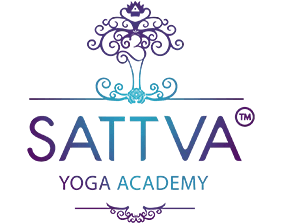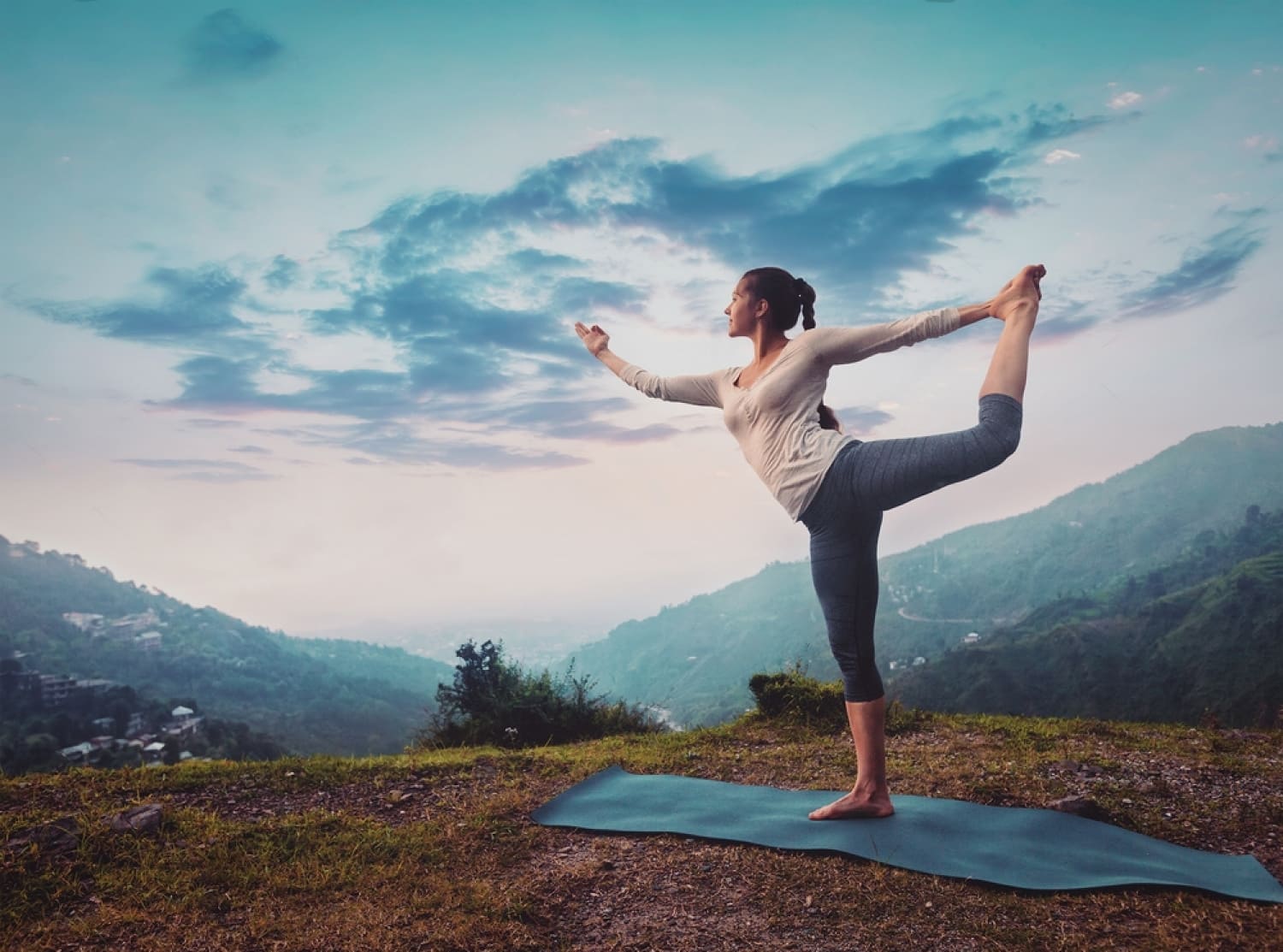Introduction
Kundalini Yoga Teacher Training offers a transformative journey not just in mastering yoga techniques but also in personal and spiritual development. This training provides an intensive exploration of Kundalini Yoga, known as the yoga of awareness, which focuses on awakening your inner energy and channelling it to elevate spiritual consciousness. By engaging in this profound practice, participants embark on a deep, holistic transformation that impacts all areas of life.
The importance of holistic preparation cannot be overstressed in maximising the benefits of Kundalini Yoga Teacher Training. Aspiring teachers are guided to prepare mentally, physically, and spiritually to fully embrace the rigorous and enriching curriculum offered. This preparation involves understanding the foundational principles of Kundalini Yoga, developing a personal meditation practice, and cultivating a lifestyle that supports yogic principles.
Kundalini Yoga Teacher Training is more than learning to teach yoga; it’s an invitation to deeply connect with the true self and awaken one’s latent potential. Through dedicated practice, comprehensive training, and guided reflection, trainees develop the skills to not only enrich their own lives but also to guide others on their spiritual journey. This program lays a strong foundation for anyone wishing to teach and spread the transformative power of Kundalini Yoga.
Essential Preparations Before Starting
Understanding the Kundalini Journey: Historical Insights and Core Principles
Before diving into Kundalini Yoga Teacher Training, it’s crucial to grasp the historical background and the fundamental principles of Kundalini Yoga. Originating from the sacred teachings of the Vedas, this ancient practice focuses on awakening the Kundalini energy at the base of the spine and channelling it through the seven chakras up to the crown. This process is not just about physical fitness; it’s a deep spiritual journey aimed at enhancing self-awareness and enlightenment.
Key Differences Between Kundalini Yoga and Other Yoga Styles
Focus on Energy: Unlike Hatha or Vinyasa, Kundalini places greater emphasis on spiritual and energetic aspects.
Use of Mantras and Chants: Incorporating sound vibrations is more prevalent in Kundalini to elevate consciousness.
Breathing Techniques: Specific pranayama practices are integral, aiming to unlock energy pathways.
Understanding these distinctions is vital as they influence the training approach and the transformative experience you will undergo. Recognizing how Kundalini Yoga stands apart from other forms ensures a better appreciation of its unique practices and philosophical depth.
Enhancing Your Training Experience Through Philosophy
Understanding the philosophy behind Kundalini Yoga enriches your training experience significantly. This yoga form is not merely a series of poses but a holistic discipline that integrates physical postures with meditation, mantras, and breath work to achieve a higher state of consciousness. By delving into its philosophical roots, you prepare yourself to absorb more than just the physical teachings; you open up to transformative life lessons that Kundalini Yoga imparts.
Mindful Learning: Approach each lesson with mindfulness, acknowledging the spiritual teachings alongside the physical practices.
Daily Reflection: Dedicate time to reflect on how the day’s learning applies to your personal and spiritual growth.
Exploring Advanced Asanas and Techniques in Kundalini Yoga Teacher Training
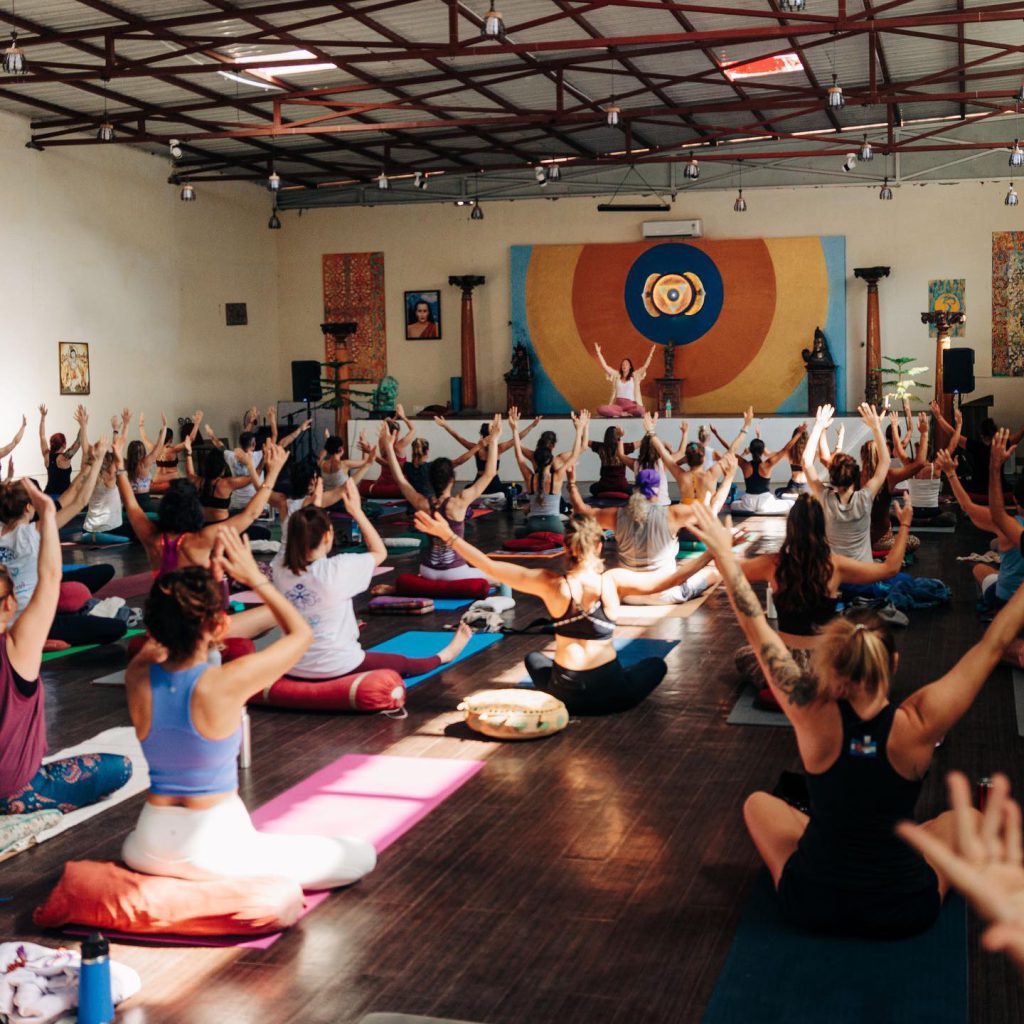
Kundalini Yoga Teacher Training goes beyond the basics, delving into advanced asanas and techniques that can profoundly transform your practice and teaching capabilities. As you progress in your training, incorporating these advanced Kundalini asanas into your routine not only enhances your physical abilities but also deepens your spiritual connection.
Gradual Integration of Advanced Asanas
Integrating advanced asanas requires patience and consistent practice. Start by introducing one or two complex poses into your routine, allowing your body to adjust to the new demands. Here’s how to effectively incorporate these asanas:
Begin with modifications: Use props or modified versions of the poses to build strength and flexibility gradually.
Listen to your body: Pay attention to your body’s signals and avoid pushing into discomfort or pain.
Consistent practice: Regularly practising these asanas increases proficiency and comfort level over time.
Understanding Benefits and Challenges
Each advanced Kundalini asana offers specific benefits and poses certain challenges. For example, Sirsasana (headstand) enhances blood flow to the brain, boosting mental clarity, while Kapalbhati Pranayama (forceful breathing technique) can improve lung capacity and resilience to stress. However, these poses can also be challenging, requiring good core strength and balance. Here are steps to understand these aspects better:
Research: Study the benefits and potential risks associated with each asana.
Seek feedback: After practising, reflect on how these poses affect your body and mind.
Seeking Guidance from Experienced Practitioners
Learning from experienced practitioners or teachers is invaluable in mastering advanced techniques in Kundalini Yoga Teacher Training. Experienced instructors can provide:
Personalised adjustments: Tailored advice on how to improve your form and technique.
Safety tips: Guidelines to prevent injuries and practice safely.
Deeper insights: Wisdom on integrating the spiritual and physical aspects of Kundalini Yoga.
Nutritional Optimization for Energy and Clarity in Kundalini Yoga Teacher Training
Proper nutrition plays a crucial role in maximising the effectiveness of Kundalini Yoga Teacher Training. As the training involves intense physical and spiritual practices, it is essential to support your body and mind with the right nutrients. Optimising your diet not only boosts your energy and clarity but also enhances your overall training experience.
Dietary Recommendations for Intense Yoga Practice
When preparing for Kundalini Yoga Teacher Training, your diet should focus on foods that sustain energy, support muscular recovery, and promote calmness. Here are some dietary guidelines:
Increase protein intake: Incorporate lean proteins like chickpeas, lentils, tofu, and quinoa to aid muscle repair and growth.
Stay hydrated: Drinking sufficient water throughout the day is vital, especially before and after your yoga sessions.
Limit processed foods: Opt for whole, unprocessed foods to maintain high energy levels and mental clarity.
Superfoods and Supplements for Yoga Practitioners
Certain superfoods and supplements are particularly beneficial for those engaged in regular yoga practice. These include:
Spirulina and Chlorella: Rich in protein and beneficial nutrients that aid in detoxification and boost energy.
Turmeric: Contains curcumin, which helps reduce inflammation and improve recovery.
Omega-3 fatty acids: Found in flaxseeds, walnuts, and fish oil, omega-3s support brain health and reduce inflammation.
Including these superfoods in your diet can significantly enhance your physical and mental capacity as you advance through your Kundalini Yoga training.
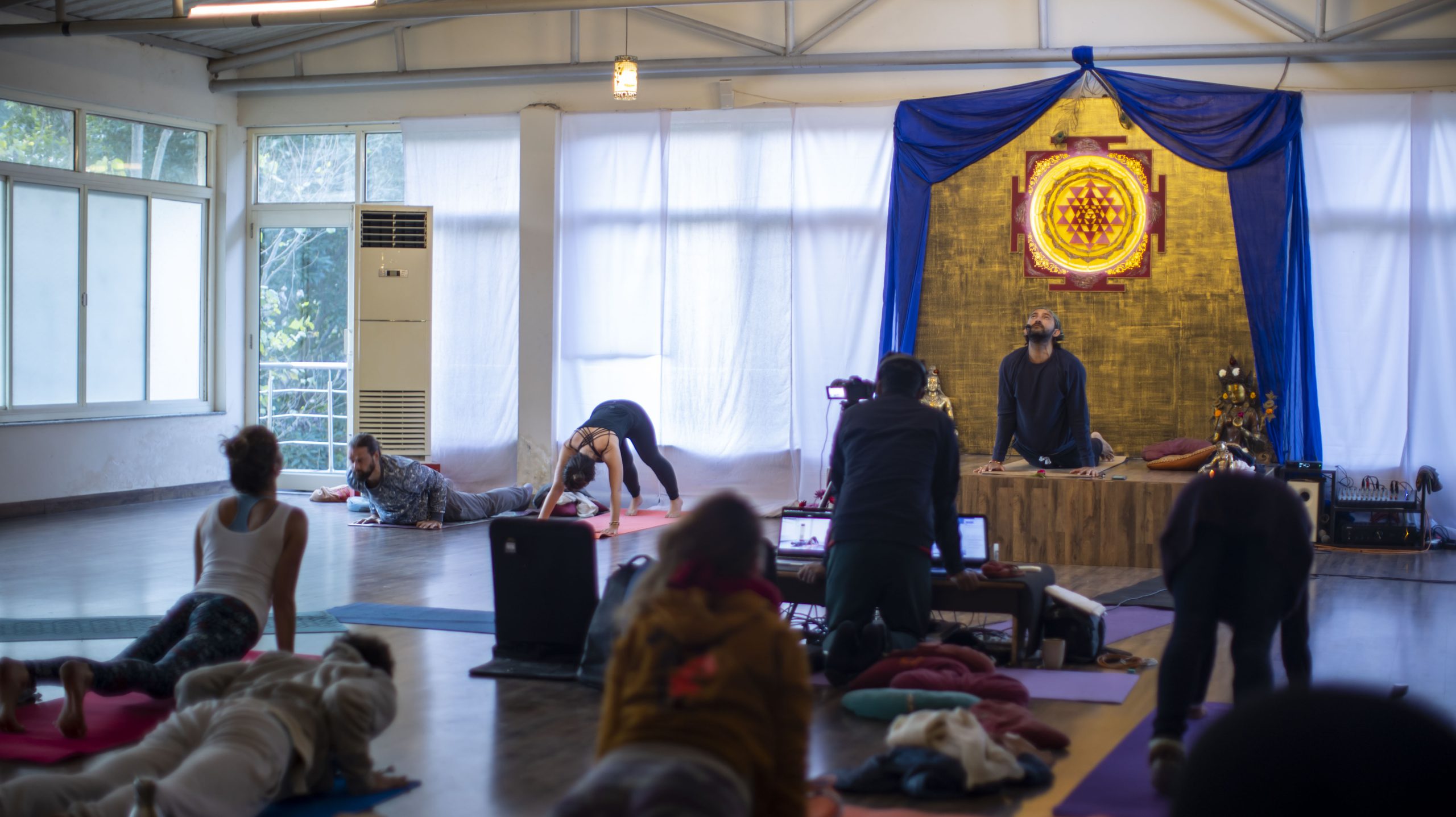
Creating a Balanced Meal Plan
To ensure that you receive all necessary nutrients during your Kundalini Yoga Teacher Training, creating a balanced meal plan is essential. Here’s how to develop a plan:
Breakfast: Focus on a balanced meal of carbohydrates and proteins like oatmeal with almond butter and berries.
Lunch: Include a variety of vegetables with a protein source and healthy fats, such as a quinoa salad with avocado and grilled chicken.
Dinner: Lighter meals, such as grilled fish with steamed vegetables, help ensure overnight digestion is not overly taxed.
Snacks: Opt for nutrient-dense snacks like nuts, yoghourt, or fruit.
Building Emotional Resilience and Self-Awareness in Kundalini Yoga Teacher Training
Understanding Emotional Resilience
Emotional resilience is crucial in Kundalini Yoga Teacher Training. It helps you manage the emotional upheavals that can arise during deep spiritual and physical practices. Developing this resilience allows you to maintain focus and composure, enhancing your learning and teaching experiences.
Engaging in Self-Awareness Exercises
To build emotional resilience, start with self-awareness exercises. These practices are essential for understanding your emotional triggers and patterns:
Journaling: Write daily about your feelings and experiences. This helps in recognizing your emotional responses and triggers.
Reflective Writing: Spend time each week to reflect on your training experiences and personal growth.
Therapy: Consider engaging with a therapist who understands the dynamics of intense physical and spiritual practices.
Techniques for Managing Stress and Anxiety
Stress and anxiety are common when facing the rigorous demands of a Kundalini Yoga Teacher Training program. Use these techniques to manage stress effectively:
Breathing Exercises: Practise pranayama to calm your mind and body.
Guided Relaxation: Regularly engage in guided relaxation sessions to reduce stress levels.
Mindful Walking: Incorporate mindful walking into your routine to connect deeply with the present moment and alleviate anxiety.
Learning About Emotional Intelligence
Understanding emotional intelligence is vital for personal growth during Kundalini Yoga Teacher Training. It involves:
Recognizing Emotions: Learn to identify and understand your emotions and those of others.
Handling Interpersonal Relationships: Use emotional intelligence to manage and navigate relationships effectively.
Empathy Development: Develop empathy by understanding different perspectives, enhancing your teaching and personal interactions.
Preparing for the Mental Rigors of Kundalini Yoga Teacher Training
Anticipating Mental Challenges
Kundalini Yoga Teacher Training is not only physically demanding but also mentally challenging. Anticipating these challenges is crucial for developing effective coping strategies. During training, you may encounter intense emotions, mental exhaustion, and spiritual awakenings that can be overwhelming.
Developing Coping Strategies
To manage these mental challenges, it’s essential to have coping strategies in place:
Establish a Support Network: Connect with peers and mentors who understand the training’s demands. This network can provide emotional support and practical advice.
Regular Self-Assessment: Monitor your mental and emotional health regularly. Recognize signs of stress or burnout early and take proactive steps to address them.
Set Realistic Goals: Break down your training goals into manageable tasks. This can prevent feelings of overwhelm and help maintain focus.
Techniques for Maintaining Focus and Motivation
Daily Meditation: Incorporate meditation into your daily routine to enhance mental clarity and concentration.
Visualisation: Use visualisation techniques to keep your goals and the benefits of achieving them clear in your mind.
Reward System: Set up a reward system for yourself to celebrate small achievements throughout your training. This can boost motivation and morale.
Resources for Mental Health Support
Counselling Services: Engage with professional counsellors who specialise in dealing with the psychological impacts of intense physical and spiritual practices.
Support Groups: Participate in support groups with fellow trainees. Sharing experiences and coping techniques can be incredibly beneficial.
Mindfulness Apps: Utilise mindfulness and meditation apps that offer guided sessions to help manage stress and anxiety effectively.

Detailed Travel and Accommodation Planning for Kundalini Yoga Teacher Training
Creating a Comprehensive Travel Itinerary
When preparing for Kundalini Yoga Teacher Training, it’s crucial to develop a detailed travel plan. This plan should include your travel dates, routes, and transportation methods, along with contingency options in case of unexpected disruptions. Here’s how to ensure a smooth journey:
Check Travel Requirements: Make sure you’re aware of any visa or health requirements for your destination.
Plan for Delays: Include extra time in your travel itinerary for potential delays to avoid stress upon arrival.
Contact Information: Keep a list of important contacts, including your accommodation and training centre.
Researching and Booking Accommodations
Choosing the right accommodation is vital for supporting your yogic lifestyle during Kundalini Yoga Teacher Training. Here are some tips to find a suitable place:
Proximity: Look for accommodations near the training centre to minimise commuting stress.
Amenities: Ensure that the place supports a yogic lifestyle, with options for healthy eating and spaces for personal meditation.
Reviews: Read reviews from previous guests, especially those who have attended the same training, to gauge the suitability of the accommodation.
Preparing for Cultural Differences and Local Customs
Kundalini Yoga Teacher Training often attracts participants from across the globe. It’s important to prepare for cultural differences and respect local customs:
Cultural Research: Learn about the local customs, etiquette, and norms to ensure respectful interactions.
Language Basics: Knowing key phrases in the local language can help in daily communications and show respect for the local culture.
Adaptable Mindset: Remain open and adaptable to different ways of life and teaching styles that may differ from what you’re used to.
Financial Planning and Resource Management for Kundalini Yoga Teacher Training
Budgeting for the Training Program, Travel, and Other Expenses
Effective financial planning is crucial when preparing for Kundalini Yoga Teacher Training. It’s important to create a comprehensive budget that covers all aspects of the training, including tuition fees, travel costs, accommodation, and daily living expenses. Here’s how to manage your finances:
Estimate Costs: Research and list all potential costs associated with the training. Don’t forget to include minor expenses like local transportation and meals.
Create a Budget: Based on your cost estimates, develop a budget. Prioritise essential expenses and consider areas where you can save money.
Emergency Fund: Set aside a contingency fund to cover unexpected expenses during your training period.
Exploring Options for Financial Aid, Scholarships, and Fundraising
There are several ways to alleviate the financial burden of Kundalini Yoga Teacher Training:
Financial Aid: Some training programs offer financial aid to students. Check with the training centre to see if they provide any such options.
Scholarships: Look for scholarships offered by yoga organisations or the training centres themselves. These can significantly reduce your training costs.
Fundraising: Consider crowdfunding platforms to raise funds. Share your story and explain how this training will help you achieve your goals.
Planning for Post-Training Expenses and Potential Career Investments
After completing your Kundalini Yoga Teacher Training, you’ll need to plan for post-training expenses and career investments:
Certification Costs: Include any costs associated with obtaining your official certification, if not included in the training fees.
Professional Development: Budget for ongoing education and professional development courses to enhance your skills.
Business Costs: If you plan to open your own yoga studio or offer private lessons, consider the initial setup costs, such as renting a space, marketing, and purchasing equipment.
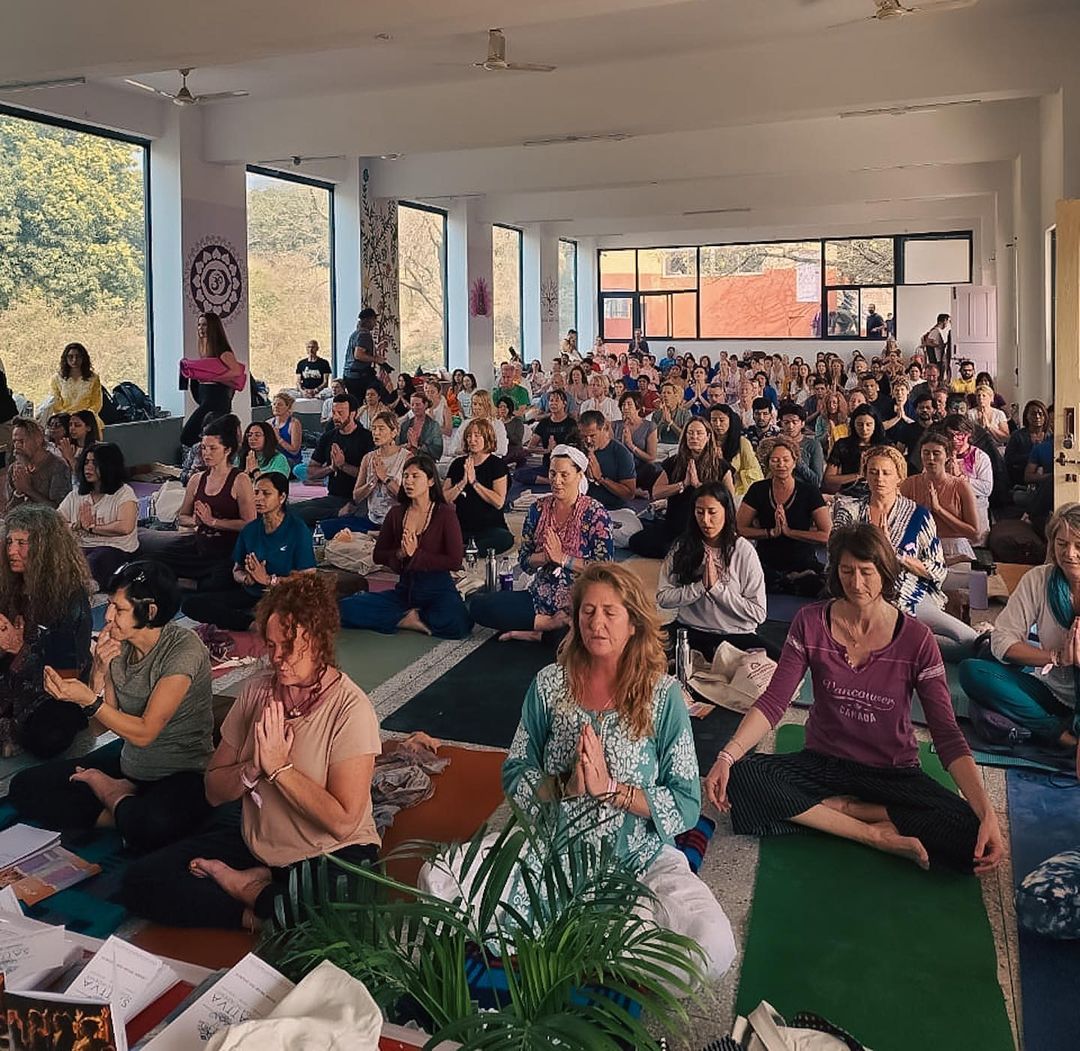
What to Pack for Kundalini Yoga Teacher Training
Specialised Yoga Equipment
Packing the right equipment is essential for your Kundalini Yoga Teacher Training to ensure you are fully prepared for every session. Here’s what you’ll need:
Yoga Mats: Choose a high-quality yoga mat that offers good grip and sufficient cushioning. This will be your primary tool, so invest in one that suits your practice and lasts longer.
Blocks and Straps: These assist in performing certain poses and help maintain alignment and balance, crucial for beginners and experienced yogis alike.
Bolsters: Essential for restorative sessions, bolsters support the body during deep relaxation and meditation exercises.
Eco-Friendly and Sustainable Products
Considering the environmental impact of your yoga practice is important. Opt for products made from sustainable materials:
Eco-Friendly Mats: Look for mats made from natural rubber or recycled materials.
Organic Cotton Straps and Bolsters: Choose accessories made from organic cotton or other natural fibres.
Sustainable Blocks: Select blocks made from cork or bamboo, which are both sustainable and durable.
Packing Tips for Maximising Space and Efficiency
Efficient packing is key, especially if you are travelling far for your Kundalini Yoga Teacher Training. Here are some tips to help you pack smartly:
Roll Your Mat Tightly: Rolling your mat tightly can save space in your bag. Consider a mat with a strap for easy carrying.
Use Packing Cubes: Packing cubes can help organise smaller items like yoga straps, socks, and personal care items, making them easier to find.
Wear Bulkier Items: To save space, wear your bulkier items, such as shoes and a sweater, during travel rather than packing them.
Layering Clothing: Opt for versatile, layerable clothing that can be adjusted for different temperatures and activities.
Self-Care and Comfort Items for Kundalini Yoga Teacher Training
Essential Self-Care Tools
In the immersive experience of Kundalini Yoga Teacher Training, maintaining your physical and emotional well-being is crucial. Integrating self-care tools into your daily routine can enhance your overall training experience. Consider packing the following:
Essential Oils: Lavender for relaxation, peppermint for invigorating the senses, and eucalyptus for deep breathing. These can be used in diffusers or applied topically with a carrier oil for massages.
Massage Tools: Compact foam rollers or handheld massage balls help relieve muscle tension after intense yoga sessions.
Acupressure Mats: Useful for stimulating pressure points to release endorphins and improve blood circulation.
Comfortable Clothing
Choosing the right clothing can significantly affect your ability to engage comfortably in training sessions. Here’s what to pack:
Yoga Apparel: Include several pairs of breathable, flexible yoga pants and tops that allow for unrestricted movement. Opt for moisture-wicking materials to keep comfortable during intense practices.
Relaxation Wear: Pack soft, loose clothing such as cotton joggers, T-shirts, and sweaters for relaxation and downtime.
Layering Pieces: Versatile items like cardigans or shawls are essential for adjusting to varying temperatures, especially in environments where morning practices can be cool.
Personal Hygiene Products
Maintaining personal hygiene is essential, particularly in a communal living and training environment. Here’s what to bring:
Natural and Organic Products: Shampoo, conditioner, soap, and facial care products that are kind to your skin and the environment.
Biodegradable Options: Consider biodegradable wipes and toothbrushes to minimise your ecological footprint.
Personal Health Items: Don’t forget any personal medications, plus items like lip balm, sunscreen, and insect repellent depending on your training location.
Academic and Learning Materials for Kundalini Yoga Teacher Training
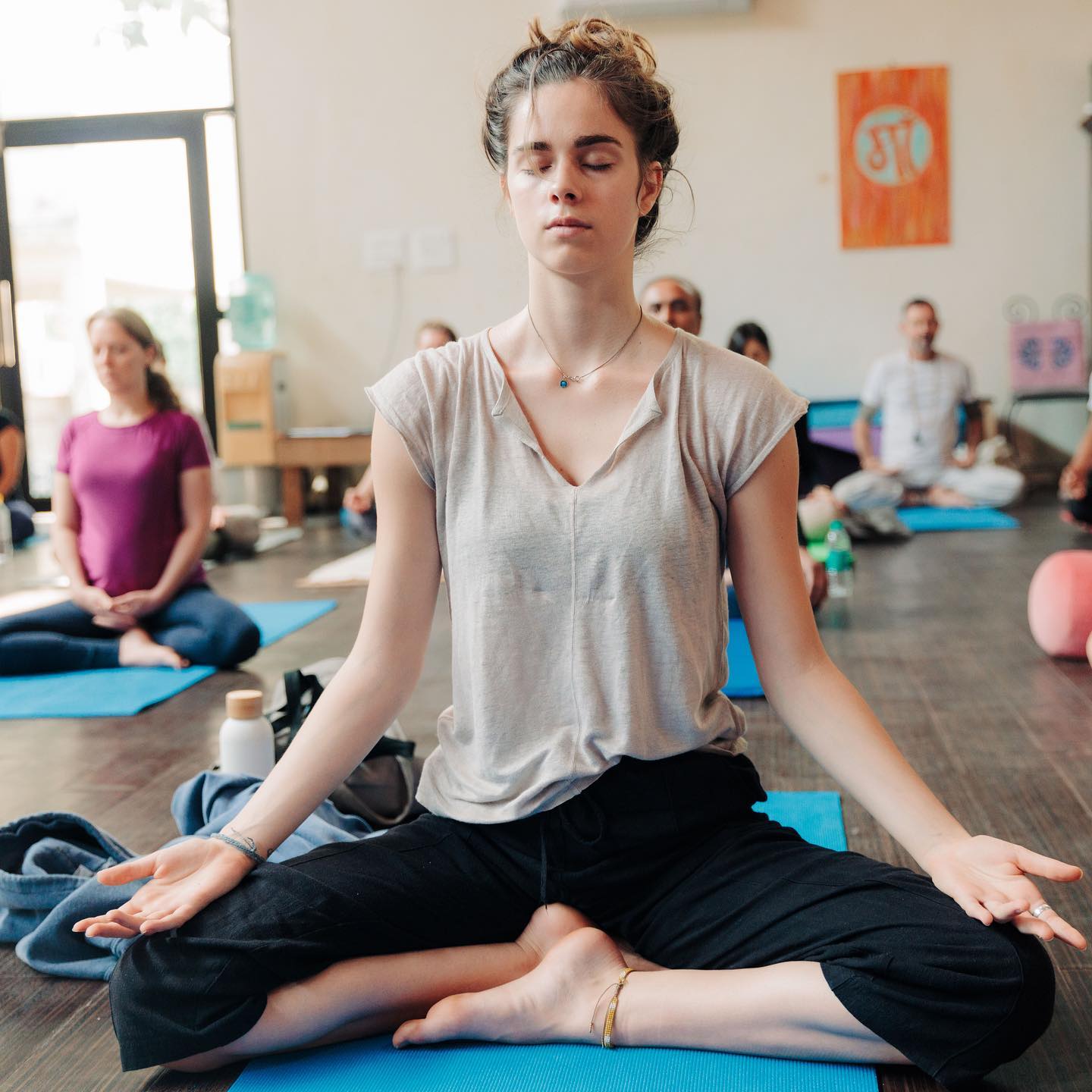
Essential Reading for Kundalini Yoga Practitioners
One of the foundational pillars of Kundalini Yoga Teacher Training is the theoretical knowledge that complements physical practice. Essential texts not only deepen your understanding but also enhance your ability to teach with authenticity. Include the following in your reading list:
“Kundalini Tantra” by Swami Satyananda Saraswati: This book provides a deep insight into the mechanisms of Kundalini awakening.
“The Kundalini Yoga Experience” by Guru Dharam Singh Khalsa and Darryl O’Keeffe: A guide to the postures and principles of Kundalini Yoga.
“Kundalini Yoga: The Flow of Eternal Power” by Shakti Parwha Kaur Khalsa: A practical manual for those who seek to understand the true essence of Kundalini Yoga.
Notebooks, Journals, and Study Aids
Effective learning in Kundalini Yoga Teacher Training involves more than just physical practice; it requires reflection and note-taking. Here’s how to make the most of these tools:
Dedicated Notebooks: Use separate notebooks for lecture notes, personal reflections, and exercise logs. This organisation aids in better retention and review.
Journals: Keeping a daily journal helps process and integrate the lessons learned during training. Reflect on both your physical and spiritual progress.
Study Aids: Highlighters, bookmarks, and sticky notes can be invaluable for marking important texts and making quick notes.
Digital Resources and Apps
Supplement your learning with digital tools and resources. These can offer convenience and enhanced learning experiences:
Yoga Anatomy Apps: Apps like “3D Yoga Anatomy” provide visual insights into how different asanas affect the body.
Meditation Timers and Guides: Tools like “Insight Timer” can help manage your meditation practices.
Online Kundalini Communities: Platforms like “3HO” (Healthy, Happy, Holy Organization) offer articles, videos, and community support that can be beneficial throughout your training.
Setting the Right Mindset for Kundalini Yoga Teacher Training
Fostering a Growth Mindset
In Kundalini Yoga Teacher Training, cultivating a growth mindset is essential. This mindset not only helps you embrace the various challenges of training but also transforms them into opportunities for personal and professional growth. Here are techniques to help you develop this perspective:
Embrace Challenges: View each challenge as an opportunity to learn something new. Whether it’s mastering a difficult pose or understanding complex philosophical concepts, each hurdle is a step forward in your journey.
Stay Curious: Maintain an attitude of curiosity throughout your training. Ask questions, seek out additional resources, and explore the depths of Kundalini Yoga beyond the curriculum.
Strategies for Cultivating a Positive and Open Attitude
A positive and open attitude is crucial for maximising the benefits of Kundalini Yoga Teacher Training. It allows you to absorb more from your lessons and interactions with peers and mentors. Implement these strategies to nurture positivity:
Mindfulness Practices: Regular mindfulness can significantly improve your emotional resilience and ability to remain positive amidst challenges.
Affirmations: Start your day with positive affirmations related to your training goals. Phrases like “I am open to learning” or “I embrace growth” can set a constructive tone for the day.
Inspirational Stories and Quotes
Motivation can sometimes wane during intense training periods. Inspirational stories about those who have successfully walked this path can reignite your passion and commitment. Additionally, keeping a collection of quotes can provide quick boosts of inspiration. Here are a few to include in your toolkit:
“The very heart of yoga practice is ‘abyhasa’ – steady effort in the direction you want to go.” – Sally Kempton
“Yoga does not just change the way we see things, it transforms the person who sees.” – B.K.S. Iyengar
“Kundalini Yoga is the science to unite the finite with Infinity, and it’s the art to experience Infinity in the finite.” – Yogi Bhajan
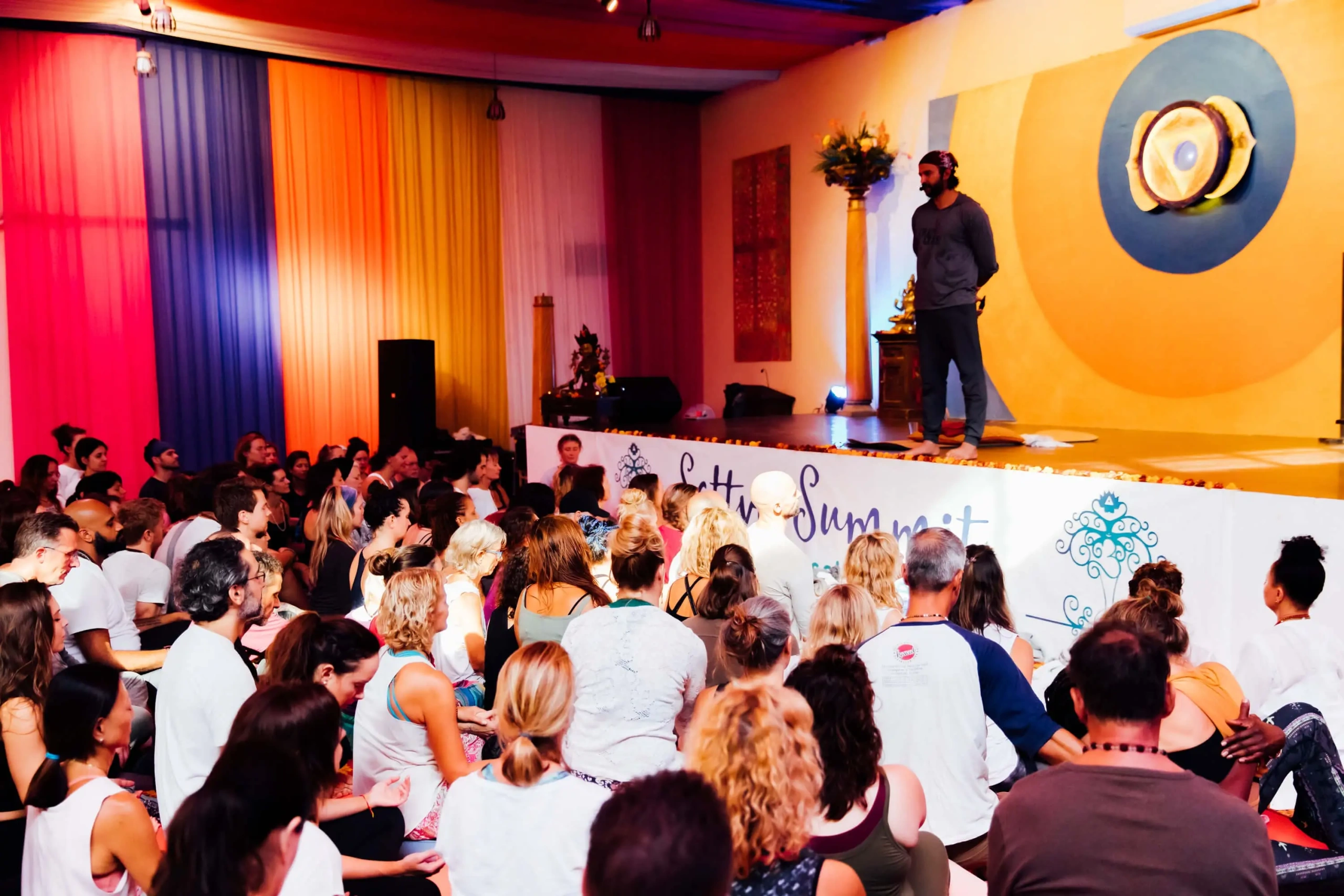
Cultivating Patience and Compassion in Kundalini Yoga Teacher Training
Embracing Daily Gratitude Practices
In Kundalini Yoga Teacher Training, cultivating patience and compassion starts with embracing gratitude. Daily gratitude practices can profoundly enhance your positivity and overall outlook, both crucial for the emotional and spiritual challenges you’ll face during training. Here’s how to integrate gratitude into your daily routine:
Morning Gratitude Meditation: Begin each day with a few minutes of meditation focused on things you are grateful for. This could include your health, the opportunity to learn, or even the simple presence of supportive people in your life.
Gratitude Reminders: Set periodic reminders on your phone or computer to pause and reflect on something positive during the day. This can help shift your focus from stress to appreciation.
Techniques for Self-Compassion and Kindness Towards Others
Self-compassion is an essential component of Kundalini Yoga Teacher Training. It involves treating yourself with the same kindness and understanding that you would offer to others. Here are techniques to develop this quality:
Mindful Self-Compassion Breaks: Whenever you notice self-criticism or harsh judgement, take a moment to breathe and offer yourself words of comfort, as you would to a friend.
Practice Loving-Kindness Meditation: Regularly practise metta meditation, where you send wishes of happiness, health, and peace to yourself and others. This can cultivate a habit of kindness and empathy.
Creating a Gratitude Journal and Reflection Practice
A gratitude journal is an effective tool for cultivating patience and compassion during your Kundalini Yoga Teacher Training. Here’s how to establish this practice:
Daily Entries: End your day by writing down three things you were grateful for. These can be as simple as a lesson learned, a pleasant interaction, or progress in your practice.
Weekly Reflections: Once a week, reflect on your entries to see the broader patterns of positivity and growth. This reflection can increase your awareness and appreciation of your journey.
Building a Support Network in Kundalini Yoga Teacher Training
Connecting with Fellow Trainees
One of the most enriching aspects of Kundalini Yoga Teacher Training is the opportunity to connect with fellow trainees. These connections can provide emotional support, enhance learning through shared experiences, and create lasting friendships. Here’s how to build strong connections:
Form Study Groups: Collaborate with peers to review course material, practice teaching, and share insights. These groups can offer diverse perspectives and mutual encouragement.
Participate Actively in Class Discussions: Engage actively during classes. This visibility can help you connect with like-minded individuals who share your enthusiasm and dedication.
Finding a Mentor or Coach
A mentor or coach who is experienced in Kundalini Yoga can provide invaluable guidance, support, and encouragement throughout your training journey. Here’s how to find a suitable mentor:
Seek Recommendations: Ask your training instructors or fellow trainees for recommendations on mentors who have a deep understanding of Kundalini Yoga.
Choose Someone Aligned with Your Goals: Ensure that your mentor’s expertise and approach align with your personal and professional goals in yoga.
Regular Meetings: Once you find a mentor, arrange regular meetings or calls to discuss your progress, challenges, and insights.
Engaging with Online Communities and Forums
Online communities and forums can be excellent resources for additional support during Kundalini Yoga Teacher Training. They provide access to a broader network of knowledge, experiences, and support beyond your immediate training environment. Here’s how to engage effectively:
Join Relevant Forums: Platforms like Reddit, 3HO, and The Yoga Forum often have active discussions and can be a goldmine of information and support.
Participate in Discussions: Share your experiences, ask questions, and offer advice to others. This engagement can deepen your understanding and introduce you to new perspectives.
Follow Online Kundalini Yoga Groups: Many social media platforms have groups dedicated to Kundalini Yoga where members share daily tips, inspirational quotes, and educational content.
Conclusion: Preparing for Your Kundalini Yoga Teacher Training Journey
As we conclude this guide on preparing for Kundalini Yoga Teacher Training, it’s important to recap the holistic steps required to embark on this transformative journey successfully. We’ve discussed the importance of physical readiness, from selecting the right yoga gear to optimizing your diet for maximum energy and clarity. We’ve explored the necessity of mental preparation through establishing a strong meditation practice and building emotional resilience. Additionally, we emphasised the value of having a supportive network, including connecting with fellow trainees and finding mentors.
Starting your preparation journey with enthusiasm and commitment is essential. Kundalini Yoga Teacher Training is not just about learning asanas; it’s about undergoing a profound spiritual transformation that requires dedication, openness, and a willingness to delve deep into personal growth. Here are some final tips to ensure your training experience is both successful and transformative:
Stay Organized: Keep track of your preparation progress with checklists and schedules. This will help you manage your time effectively and reduce stress as you approach your training start date.
Maintain Balance: While being thorough in your preparations, remember to maintain a balanced approach. Allow time for rest and reflection to ensure you do not become overwhelmed.
Embrace Flexibility: Be prepared to adapt your plans as needed. Flexibility can help you overcome unexpected challenges and make the most of your training experience.
